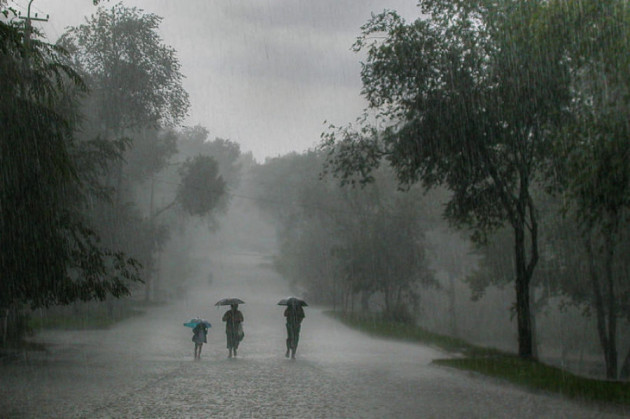Monsoon likely to hit Nepal today
 Kathmandu / June 9 : With favourable conditions developing, meteorologists said Nepal was likely to welcome monsoon tomorrow.
Kathmandu / June 9 : With favourable conditions developing, meteorologists said Nepal was likely to welcome monsoon tomorrow.
According to Meteorological Forecasting Division, monsoon wind from the Bay of Bengal has already hit western and central regions of Nepal a few days ago. However, some conditions must be met for formal announcement of the onset of monsoon.
Meteorologist at MFD Barun Paudel said eastern region should record significant rainfall for formal announcement of the onset of monsoon.
“The monsoon winds have already hit eastern part of the country, but just traces rainfall has been recorded so far,” Paudel told media, adding, “We are waiting for the eastern region to record significant rainfall for formal announcement of monsoon.” He said heavy rainfall was expected by tomorrow.
Director General at MFD Dr Rishi Ram Sharma said two major conditions play vital role in the entry of monsoon
to Nepal. “First westerly winds should be replaced by easterly (monsoon) winds and significant rainfall should be recorded.”
Earlier last week, Department of Hydrology and Meteorology has predicted the possibility of early monsoon onset in Nepal. In Nepal, monsoon generally begins on June 10 and withdraws from Nepal on September 23.
“In South Asia, southwest monsoon picks up more moisture from the Bay of Bengal and heads towards north-east India. As information received so far from the weather maps and satellite images show that monsoon has already developed over the east and central Bay of Bengal and central Bangladesh, Nepal is likely to experience monsoon a few days prior to the normal onset date,” read a monsoon watch released by Meteorological Forecasting Division.
Once monsoon enters from the eastern region, it makes progressive westward advancement to the remaining parts of the country over the next few days through the central region. Meteorologists said conditions looked favourable for arrival of monsoon before the scheduled date. Monsoon lasts for an average of 105 days.
Nepal receives an average of 80 per cent of annual rainfall during the monsoon, which originates in the Bay of Bengal and moves along the southern flanks of the Himalayas, bringing rains to Nepal. The average annual rainfall in Nepal is 1,600 mm, but it varies from place to place depending on climatic conditions.
Monsoon is the wettest season and is the main source of precipitation in Nepal. The effect of monsoon is prominent in the eastern part of the country. The northern and mid-western regions are generally drier compared to the eastern parts.
The driest regions Mustang, Manang and Dolpa receive less than 150 mm of rainfall while the wettest region Kaski receives more than 4,500 mm rainfall during the monsoon season. DoHM said only three monsoons have been recorded to have arrived on time since 1968.
